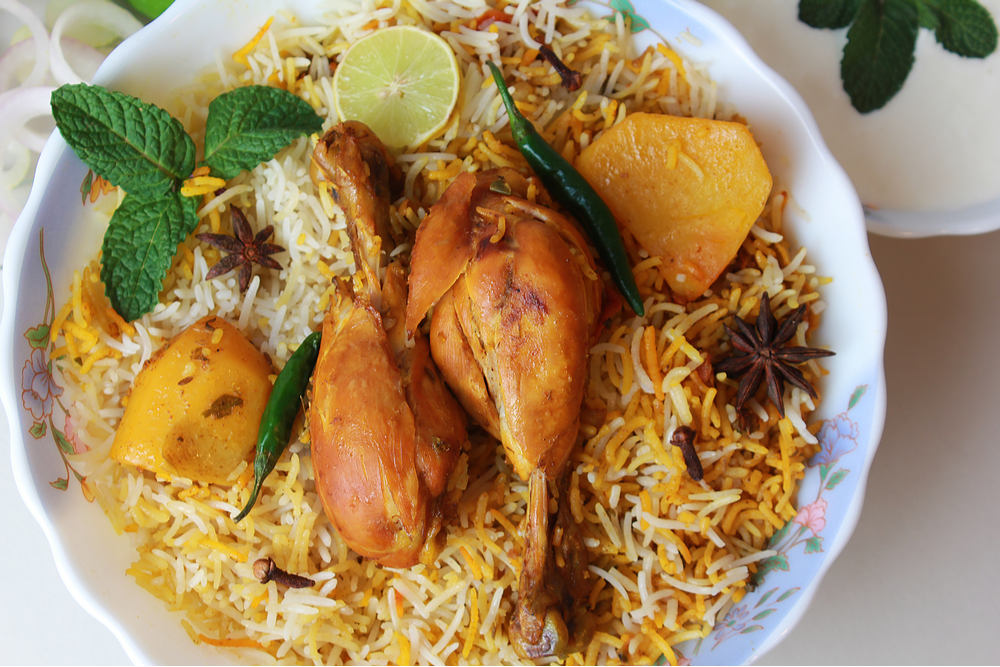Cuisines
Introduction:

Pakistan's culinary landscape is a testament to its rich cultural heritage, diverse regional influences, and centuries-old culinary traditions. From aromatic biryanis to succulent kebabs, fragrant curries, and delectable sweets, Pakistani cuisine tantalizes the taste buds with its vibrant flavors and mouthwatering dishes. In this comprehensive exploration, we embark on a gastronomic journey through the diverse and flavorful cuisine of Pakistan, unraveling its origins, ingredients, cooking techniques, and regional specialties.
Historical Roots and Influences:

Pakistani cuisine has been shaped by a myriad of historical, geographical, and cultural influences, including the culinary traditions of indigenous peoples, invaders, traders, and settlers who have traversed the region over millennia. Ancient civilizations such as the Indus Valley Civilization and the Gandhara civilization made significant contributions to the culinary repertoire of Pakistan, introducing ingredients such as wheat, rice, lentils, and spices. Subsequent invasions by the Persians, Greeks, Arabs, Turks, and Mughals left an indelible mark on Pakistani cuisine, influencing cooking techniques, ingredients, and flavor profiles.
Staple Ingredients and Flavors:

a. Grains:
Wheat and rice are staple grains in Pakistani cuisine, forming the basis of various breads, rice dishes, and desserts. Chapati, naan, and paratha are popular breads, while Biryani and Pulao are iconic rice dishes.
b. Meat:
Pakistanis are fond of meat dishes, with lamb, goat, beef, and chicken being commonly consumed. Kebabs, curries, and grilled meats (tikka and seekh kebabs) are ubiquitous in Pakistani cuisine.
c. Lentils and Pulses:
Lentils (daal) and pulses are essential components of Pakistani cuisine, providing protein-rich dishes such as daal curry, daal chawal, and haleem.
d. Spices:
Pakistani cuisine is renowned for its use of aromatic spices, including cumin, coriander, turmeric, chili powder, garam masala, and cardamom. These spices add depth, flavor, and complexity to dishes.
Regional Varieties:

a. Punjab:
Punjabi cuisine is characterized by robust flavors, generous use of ghee (clarified butter), and hearty dishes. Tandoori dishes, such as Tandoori Chicken and Naan, are popular, along with dishes like Sarson da Saag and Makki di Roti.
b. Sindh:
Sindhi cuisine is known for its diverse flavors and influences, with dishes ranging from savory to sweet. Sindhi Biryani, Sindhi Kadhi, and Sai Bhaji are popular dishes, along with sweet treats like Sohan Halwa.
c. Khyber Pakhtunkhwa (KP):
KP cuisine is characterized by its rich and spicy flavors, influenced by the region's rugged terrain and Pashtun heritage. Chapli Kebab, Peshawari Naan, and Peshawari Karahi are iconic dishes from the region.
d. Balochistan:
Balochi cuisine reflects the nomadic lifestyle and resourcefulness of the Baloch people. Sajji (roasted lamb), Balochi Pulao, and Kaak (flatbread) are traditional dishes enjoyed by the Balochi community.
e. Gilgit-Baltistan:
Gilgit-Baltistan cuisine is known for its simple yet flavorful dishes, influenced by Tibetan, Central Asian, and Kashmiri cuisines. Chapshuro, Mantu, and Shapik are popular dishes, along with Chilpindok (dried apricot stew).
Signature Dishes and Delicacies:
a. Biryani:
Biryani is a fragrant rice dish cooked with aromatic spices, meat (usually chicken, mutton, or beef), and sometimes vegetables. It is a staple at weddings, festivals, and special occasions, cherished for its rich flavors and complexity.
b. Nihari:
Nihari is a slow-cooked stew made with tender meat (usually beef or mutton), simmered in a flavorful broth with spices and herbs. It is traditionally served for breakfast with naan or roti and garnished with ginger, green chilies, and lemon.
c. Haleem:
Haleem is a hearty and nutritious dish made with a blend of wheat, barley, lentils, and meat (usually chicken or beef), slow-cooked to perfection with spices and herbs. It is often enjoyed during the Islamic month of Ramadan.
d. Seekh Kebab:
Seekh Kebab is a popular grilled meat dish made with minced meat (usually lamb or beef) mixed with spices, herbs, and onions, skewered onto metal rods (seekh) and grilled until tender and flavorful.
e. Gulab Jamun:
Gulab Jamun is a beloved sweet treat made with khoya (reduced milk solids) dough, shaped into balls, deep-fried until golden brown, and soaked in sugar syrup flavored with rose water and cardamom.
Street Food Culture:

Pakistan boasts a vibrant street food culture, with bustling bazaars and food stalls offering a myriad of savory and sweet delights. Chaat, Samosas, Pakoras, Gol Gappay, and Dahi Bhalla are among the popular street food items enjoyed by Pakistanis.
Festive Cuisine:
Festivals in Pakistan are incomplete without an array of special dishes and delicacies prepared to mark the occasion. From Eid specialties like Sheer Khurma and Seviyan to Basant delights like Chana Chaat and Jalebi, festive cuisine adds an extra layer of joy and celebration to the festivities.
Conclusion:
Pakistani cuisine is a symphony of flavors, colors, and aromas that reflects the nation's rich cultural heritage, diverse regional influences, and culinary ingenuity. From the bustling streets of Lahore to the rugged mountains of Gilgit-Baltistan, the cuisine of Pakistan is as diverse as its people, offering a tantalizing array of dishes to satisfy every palate. Whether savoring a succulent kebab, indulging in a fragrant biryani, or relishing a sweet gulab jamun, Pakistani cuisine is a celebration of life, culture, and community, bringing people together in shared moments of culinary delight and camaraderie.